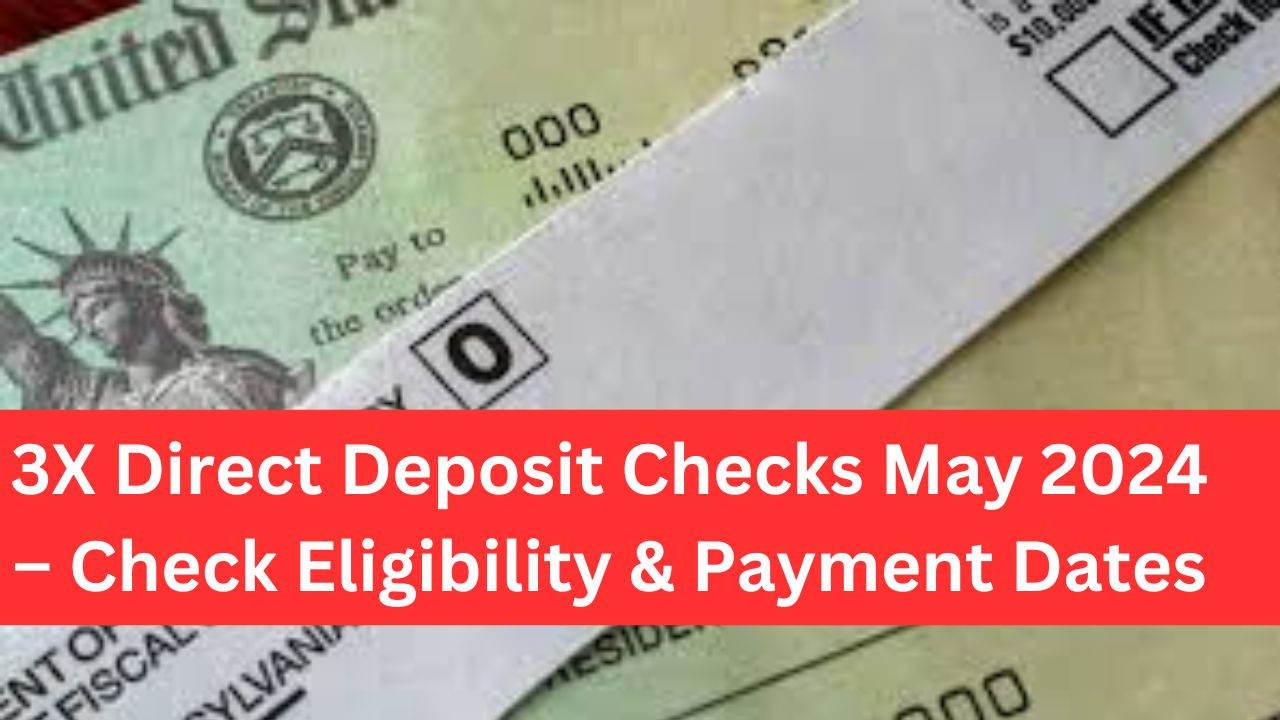As the United States continues to navigate the aftermath of the COVID-19 pandemic and its economic impacts, the federal government is exploring new measures to provide financial relief to Americans. One such proposal gaining traction is the issuance of 3X Direct Deposit Checks in May 2024, a bold initiative aimed at boosting household spending and stimulating economic recovery.
The proposed 3X Direct Deposit Checks would provide eligible individuals with three separate direct payments within a span of three consecutive months, starting in May 2024. This unprecedented move is designed to inject a substantial amount of cash into the hands of Americans, enabling them to meet their financial obligations, cover essential expenses, and potentially spur economic growth through increased consumer spending.
$2000 Stimulus Check 2024 in May For Seniors On SSI, SSDI & VA, Update on Benefits & Eligibility
3X Direct Deposit Checks May 2024 Eligibility Criteria
To ensure that the 3X Direct Deposit Checks reach those in greatest need, the federal government has established eligibility criteria based on income levels and filing status. Here’s a breakdown of the proposed eligibility requirements:

$1200+$500 Stimulus Checks 2024 – Know Payment Dates & Eligibility
Income Thresholds:
- Individuals with an adjusted gross income (AGI) of up to $75,000 will receive the full amount of each direct deposit check.
- Married couples filing jointly with an AGI of up to $150,000 will receive the full amount of each direct deposit check.
- Head of household filers with an AGI of up to $112,500 will receive the full amount of each direct deposit check.
Phase-out Range:
- For individuals with an AGI between $75,000 and $99,000, the payment amount will gradually decrease.
- For married couples filing jointly with an AGI between $150,000 and $198,000, the payment amount will gradually decrease.
- For head of household filers with an AGI between $112,500 and $136,500, the payment amount will gradually decrease.
Income Cap:
- Individuals with an AGI above $99,000 will not be eligible for the 3X Direct Deposit Checks.
- Married couples filing jointly with an AGI above $198,000 will not be eligible for the 3X Direct Deposit Checks.
- Head of household filers with an AGI above $136,500 will not be eligible for the 3X Direct Deposit Checks.
It’s important to note that these income thresholds and eligibility criteria are based on the proposed legislation and may be subject to change as the bill progresses through Congress and the legislative process.
3X Direct Deposit Checks May 2024 Payment Dates
The 3X Direct Deposit Checks are intended to be distributed over a three-month period, with each payment arriving at the beginning of the month. Here’s an overview of the anticipated payment dates:
First Direct Deposit Check: May 1, 2024
The first direct deposit check is expected to be issued on May 1, 2024, for eligible individuals who have provided their bank account information to the Internal Revenue Service (IRS) through previous tax filings or other federal programs.
Second Direct Deposit Check: June 1, 2024
The second payment in the series will be deposited directly into eligible individuals’ bank accounts on June 1, 2024, following the same distribution process as the first check.
Third Direct Deposit Check: July 1, 2024
The third and final direct deposit check is scheduled for July 1, 2024, completing the three-month cycle of financial assistance.
It’s important to note that these payment dates are subject to change based on the legislative process and the implementation timeline set by the IRS and the Department of the Treasury.
How to increase SSA Payment 2024
Maximizing your Social Security benefits is crucial for a comfortable retirement. With some strategic planning, you can potentially boost your monthly payments in 2024 and secure a higher lifetime income from Social Security.
One of the most effective ways to increase your benefits is to delay claiming them. For every year you delay past your full retirement age (66-67 for those born in 1943-1959) until age 70, your payments grow by 8% per year. This delayed retirement credit can significantly increase your monthly checks.
Another option is to continue working, even part-time, to replace lower-earning years in your Social Security calculation. Since benefits are based on your 35 highest-earning years, having a few more high-earning years on record can result in larger payments.
If you’re married, look into claiming spousal benefits. A spouse may be eligible for up to 50% of the other spouse’s full retirement benefit, provided they meet certain requirements. Coordinating when and how you claim benefits as a couple is important.
Be mindful of provisional income limits, as a portion of your Social Security may be subject to federal income tax if your total income from all sources exceeds certain thresholds. Tax planning strategies can help reduce your overall tax liability.
Additionally, stay informed about annual cost-of-living adjustments (COLAs), which help your benefits keep pace with inflation. While not guaranteed, COLAs can provide a much-needed boost to your monthly income.
Finally, consider consulting a financial advisor or a Social Security expert to develop a personalized strategy based on your unique circumstances. With the right approach, you can maximize your Social Security benefits and enjoy a more secure retirement.
